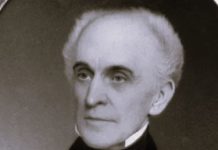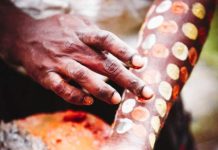Historically, the Naskapi tribe shared similar language patterns with the Nascaupi and Nascapi, who pronounced NASkuh-pee. The word “Naskapi” (meaning “people beyond the horizon”) first appeared in the 17th century. However, it later applied to Innu groups beyond missionary influence. That was notably true for those living near the Inuit communities of northern Quebec and northern Labrador. They lived on the lands that bordered Ungava Bay and the northern Labrador coast.
The MONTAGNAIS, a fellow ALGONQUIAN living to their south, originated in northern Quebec and Labrador in eastern Canada. However, they found food in different ways. The Montagnais depended primarily on the moose that roamed the forests in their territory in the winter months. They referred to themselves as Innu, “the people.” On the open plateau of the Labrador Peninsula, the Naskapi tracked caribou herds that grazed on grasses and lichens. The Naskapi tribe was similar to western Subarctic Indians and some Arctic Indians in their reliance on caribou.
They used snowshoes and toboggans to follow the seasonal migration of the herds. Their cone-shaped wigwams were covered with caribou hides, and their snowshoes were bound with caribou thongs. Naskapis hunted small game, including beaver, porcupine, otter, and a bird called a grouse, just like Montagnais.
With stone, bone, and antler gear, they also fished the rivers in the springtime when the snow melted. Trout was their favorite catch. During the spring and summer, they traveled in birch-bark canoes to avoid black flies and mosquitoes. Due to their extreme northern location, the Naskapi tribe adapted certain Inuit methods of retaining body heat in subzero weather.
Instead of breechcloths and leggings, they often wore hoods attached to their snug caribou shirts, along with fur trousers and stockings. Their outer layers had fur facing outward, and their inner layers had fur facing inward during the coldest months. Their harsh and bleak environment may have contributed to their fondness for bright colors. They decorated their shirts in bright colors, such as red, yellow, and blue, with geometric patterns. Tattooing was also common among them, as well as among their CREE neighbors. Using a needle, the Cree pushed a wet thread dipped in charcoal through their skin.
The Naskapi tribe, however, cut their skin, then rubbed charcoal or soot into it using a piece of stone. Both methods were painful and served as tests of courage as well as decorations. In addition to their bravery in warfare, the Naskapi also demonstrated bravery in battles against their traditional enemies, the Inuit.
However, they were not as effective in battle as the Montagnais, who adopted some IROQUOIS (HAUDENOSAUNEE) tactics. Unlike most Indian societies, Naskapi society was a murder-free zone. Self-defense killings would not be punished. The relatives of the slain person can take revenge in the case of an unprovoked murder, however.
Those who fail to do so may be called to a council of elders by the band chief. The guilty man would walk away if they decided the killing wasn’t self-defense. The chief would then select warriors to act as executioners and shoot the condemned man in the back. His corpse would not even be buried. Though hunger was often a problem, the Naskapi abhorred cannibalism, even if it meant survival. According to their legends, there were evil beings called Atsan, who kidnapped children and ate them. Similar to windigos in other Subarctic Algonquian legends, Atsan was believed to exist in the north country.
Because they lived so far from most non-Indian settlements, the Naskapi tribe were able to maintain their traditional ways for a long time after the arrival of Europeans, first the French and then the English. Their numbers eventually plummeted and their culture was destroyed by European diseases. The Naskapi tribe are still hunting in the north, as they did in the days of their ancestors.
Various Naskapi bands, or First Nations, as they are called in Canada, have united with their Montagnais relatives as a political entity known as the Innu Nation despite maintaining separate leadership and reserve lands. Old Fort Chimo was the site of the Hudson’s Bay Company’s first trading post in 1831, establishing the first regular contact between the Naskapi and Western society.
Read More: The History of the Arikara Tribe







